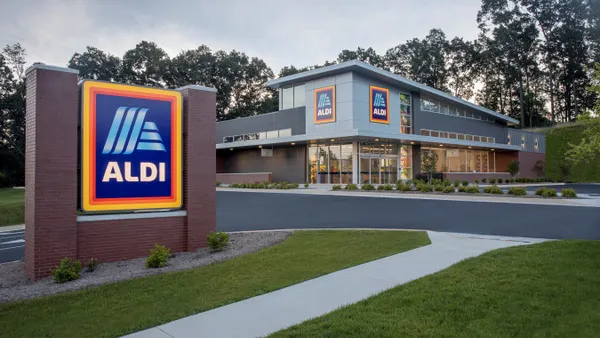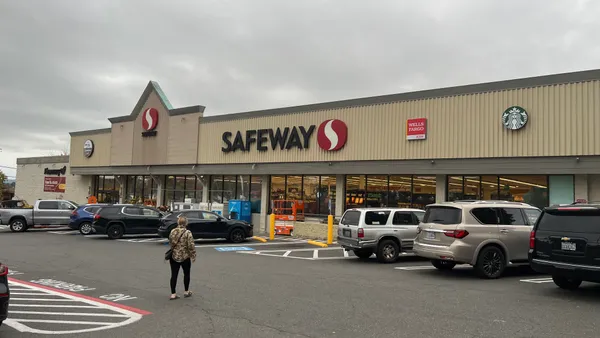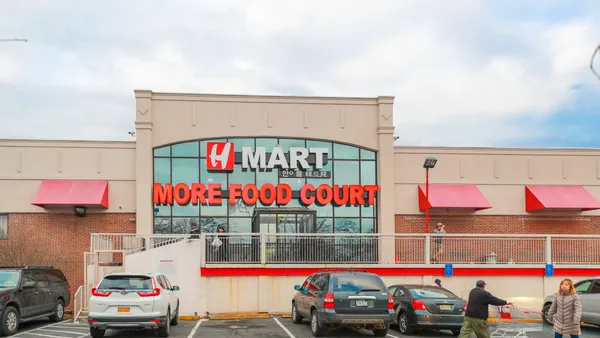Albertsons has waited a long time to go public, and when the moment finally came it wasn’t the home run the company had hoped for. The grocer’s stock debuted on the New York Stock Exchange at $16 a share and raised $800 million, below the $18 to $20 share price range the company sought.
In an interview with Grocery Dive shortly before the markets closed on Friday, CEO Vivek Sankaran chalked the result up to the volatility of the market.
“When you begin this process, you begin it at a certain time and with a certain aspiration in mind, and then the markets do what they do,” he said. “The way we think about it is, in what is arguably one of the biggest human calamities in the world with COVID, we IPO’d. A new group of investors put their confidence in us.”
Investors may have been nervous about Albertsons’ long-term prospects post-COVID. But Sankaran said he’s seeing consumer habits taking shape that could boost at-home food spending for years to come — most notably the renewal of family cooking traditions and the increase in people working from home.
“I think we’re all going to ask ourselves, do we really need to go back like we did like clockwork to our offices or is there another way of working?” he said. “The more people stay at home, the more they’re going to shop our stores.”
Albertsons has so far this year benefited from strong execution and having stores in prime locations, Sankaran said. And it will continue to improve its omnichannel shopping experience while also investing in efficiency. The company is continuing to update stores with more fresh items, expand its online operations and competitively price its products. Its supply chain, knocked back at first by panic buying in March and April, has recovered and is strengthening, Sankaran said.
E-commerce has gained renewed importance for Albertsons, he noted. The grocer’s online sales growth outpaced its rivals during the initial stages of the pandemic, up an astounding 243% in March and April. It has introduced innovations aimed at making online grocery more convenient, like closely tying in its loyalty program, and will continue to focus on improving its platform. Sankaran said the company’s stores will continue to be the focus for fulfillment due to their size and prime locations.
Albertsons is also accelerating its store pickup program, Drive Up & Go, as companies like Target, Aldi and Sprouts chart a similar expansion. More than 600 Albertsons stores currently offer the service, and the goal is to have 1,600 locations operational by the end of next year.
“We’re going to accelerate at a much more torrid pace,” he said.
Since being named chief executive a little over a year ago, Sankaran, who briefly served as chief executive of PepsiCo Food North America prior to taking the top post at Albertsons, has made adopting new technology a defining point of his tenure. Albertsons has installed systems to better manage fresh produce, added self-checkout kiosks to hundreds of stores and launched a test of automated micro-fulfillment centers to fill online orders.
“It’s a high priority for me,” said Sankaran, who holds two engineering degrees.
But technology alone can’t resolve the hit grocers have taken to store experiences like self-service bars, sit-down eating and sampling stations. Although sales have increased dramatically in center store and the fresh perimeter, prepared food sales are down as much as 40% since the pandemic forced salad bars and other service departments to shutter.
Sankaran said Albertsons is in no rush to reopen self-service, and that full-service departments like meat and deli are still able to provide the meals and ingredients people are looking for.
“You can still get all those things in our stores, you just might have to take an extra moment and ask somebody to give it to you,” he said.
The shopping experience has changed considerably at Albertsons and other grocery stores as they’ve implemented new cleaning and social distancing measures. Customers now wait to check out in staggered lines and greet their cashier behind a plexiglass barrier. Sankaran said shoppers have adjusted to this new reality and that growing store traffic indicates their increasing comfort level.
“We are doing everything we can, and I suspect that they do feel really safe in our stores,” he said. “The proof was always are they coming and shopping more? And the answer is yes, they are.”











